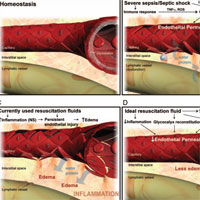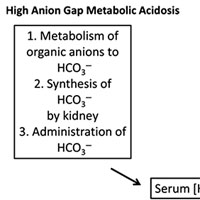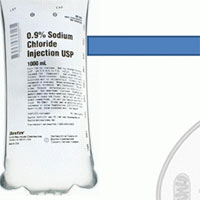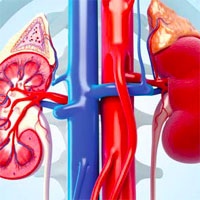Tag: resuscitation

Functional Status Change Among Children With ECMO to Support Cardiopulmonary Resuscitation in a Pediatric Cardiac ICU
This is the first extracorporeal cardiopulmonary resuscitation report to examine changes in Functional Status Scale from admission (baseline) to discharge as a measure of overall functional outcome. Half of surviving patients... read more

Prehospital Plasma during Air Medical Transport in Trauma Patients at Risk for Hemorrhagic Shock
In injured patients at risk for hemorrhagic shock, the prehospital administration of thawed plasma was safe and resulted in lower 30-day mortality and a lower median prothrombin-time ratio than standard-care resuscitation.... read more

Chest Compression Rates and Pediatric In-hospital Cardiac Arrest Survival Outcomes
Non-compliance with compression rate Guidelines was common in this multicenter cohort. Among ICU patients, slightly lower rates were associated with improved outcomes compared to Guidelines.Prospective observational study... read more

Thai cave rescue: The drug that allowed boys to survive rescue mission
Thai schoolboys were rescued from the cave using dissociative ketamine plus positive-pressure facemask ventilation (to prevent water from leaking into their masks), so they basically used delayed sequence intubation strategy.... read more

Choice of Fluid Therapy in the Initial Management of Sepsis, Severe Sepsis, and Septic Shock
Sepsis results in disruption of the endothelial glycocalyx layer and damage to the microvasculature, resulting in interstitial accumulation of fluid and subsequently edema. Fluid resuscitation is a mainstay in the initial... read more

Treatment of Acute Non-Anion Gap Metabolic Acidosis
Acute non-anion gap metabolic acidosis is now recognized to be as a common cause of metabolic acidosis, particularly in the ICU. Further examination of its impact on cellular function and clinical outcome are needed. Most... read more

Nine Reasons to Quit Using Normal Saline for Resuscitation
Saline vs. balanced solutions has been a topic of ongoing debate. Two fresh studies will illuminate this: the SMART and SALT-ED trials. This post summarizes current knowledge, beginning with physiology and working our way... read more

The Fluid Debate: Balanced or Unbalanced
Consider using balanced fluids in your ED unless you are treating a patient at risk for cerebral edema, or a patient with a chloride responsive metabolic alkalosis, e.g. from gastric losses. Although the superiority of balanced... read more

AKI and Mild Therapeutic Hypothermia in Patients After Cardiopulmonary Resuscitation
The aim of this study was to investigate the influence of mild therapeutic hypothermia (MTH) on the incidence of and recovery from acute kidney injury (AKI). Mild therapeutic hypothermia seems to have a protective effect... read more
Hemodynamic Support of Pediatric and Neonatal Septic Shock
Margaret Parker, MD, MCCM, speaks with Joseph A. Carcillo, MD, about the article, "American College of Critical Care Medicine Clinical Practice Parameters for Hemodynamic Support of Pediatric and Neonatal Septic Shock," published... read more

Haemostatic Resuscitation in Trauma: The Next Generation
The next generation of haemostatic resuscitation aims at applying a ratio 1:1:1 driven strategy while using antifibrinolytics, haemostatic monitoring and avoiding critical fibrinogen deficiency by substitution. Mortality... read more

Patient Remains Awake for 90 Minutes of CPR
A man undergoing CPR, exhibited signs of conscious awareness for 90 minutes before the medical team stopped the life-sustaining procedure, according to a new case report. The 69-year-old man was admitted to a hospital in... read more

Strategies for Intravenous Fluid Resuscitation in Trauma Patients
Fluids are drugs and should be managed as such. Appropriate early fluid resuscitation in trauma patients is a challenging task. Care should be taken in selecting both the type and volume to promote appropriate perfusion and... read more

Abnormal Saline and the History of Intravenous Fluids
Two new clinical trials together involving nearly 30,000 patients support previous observational evidence that the most common solution used for intravenous fluid therapy in the world is associated with kidney damage. Both... read more








